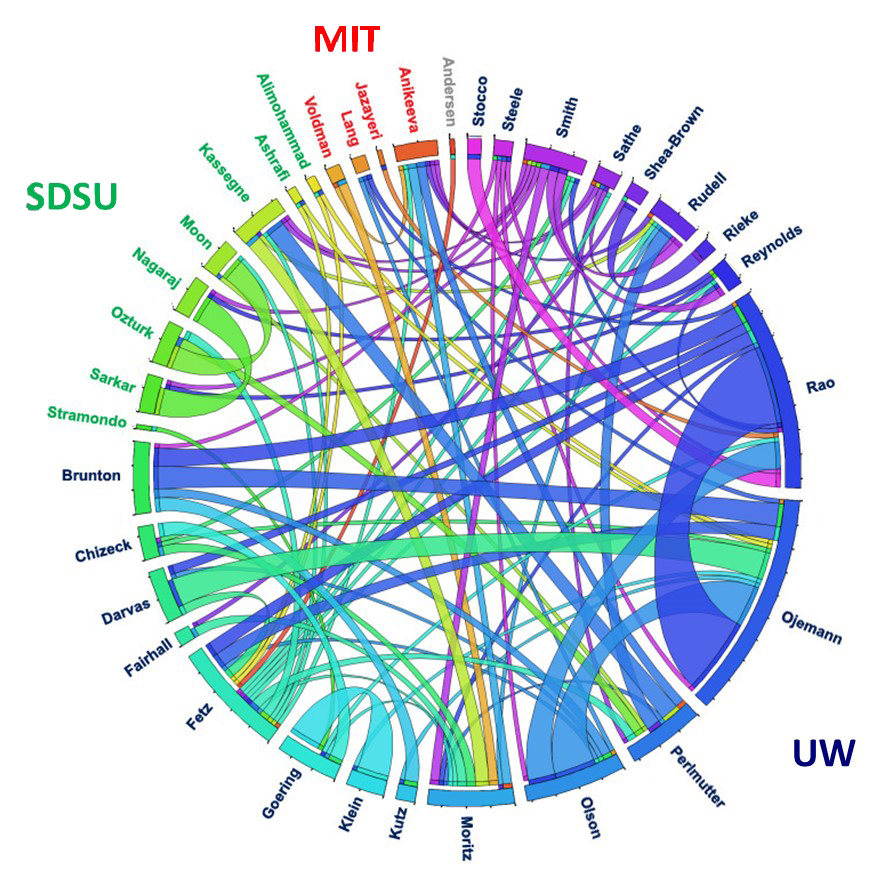A thrust is an area of research focus at the Center for Neurotechnology (CNT), and it encompasses the fundamental knowledge and foundational research that our experts bring to the center. These research thrusts feed into already-existing technologies that we are using and new technologies we are developing and integrating into our testbeds.
Each CNT project reflects the contribution of these research thrusts:
-
Experimental Neuroscience
Led by Eberhard Fetz and Richard Anderson, the Experimental Neuroscience Research Thrust uncovers principles of engineered neuroplasticity in animal models and humans.
-
Computational Neuroscience
Led by Rajesh Rao and Eric Shea-Brown, the Computational Neuroscience Thrust aims to better understand neural circuit dynamics and develops co-adaptive mathematical algorithms for inducing neuroplasticity in the brain and spinal cord. This research thrust has a focus that goes in two directions: Transferring the understanding of biological systems to the control of sensorimotor devices, and
-
Communication and Interface
Led by Josh Smith and Sam Kassegne, the Communication and Interface Thrust works on designs for enhancing the CNT’s Neurochip research platform, as well as multifunctional electrodes for engineering neuroplasticity in the brain and spinal cord. Examples include innovative glassy carbon electrodes for brain surface stimulation, and wireless power and data solutions for neural implants.
-
Neuroethics
Led by Sara Goering and Eran Klein, the Neuroethics Thrust studies how ethical issues are intertwined with neural technologies. Issues include questions of privacy, security, moral and legal responsibility, changes in our understanding of agency (the capacity of individuals to act independently and make their own free choices) shifts in personal identity and social justice. We
Pictured below is a graphic representation of research collaborations between CNT members at the University of Washington (UW), the Massachusetts Institute of Technology (MIT) and San Diego State University (SDSU). Thicker lines represent more frequent collaborative work.

